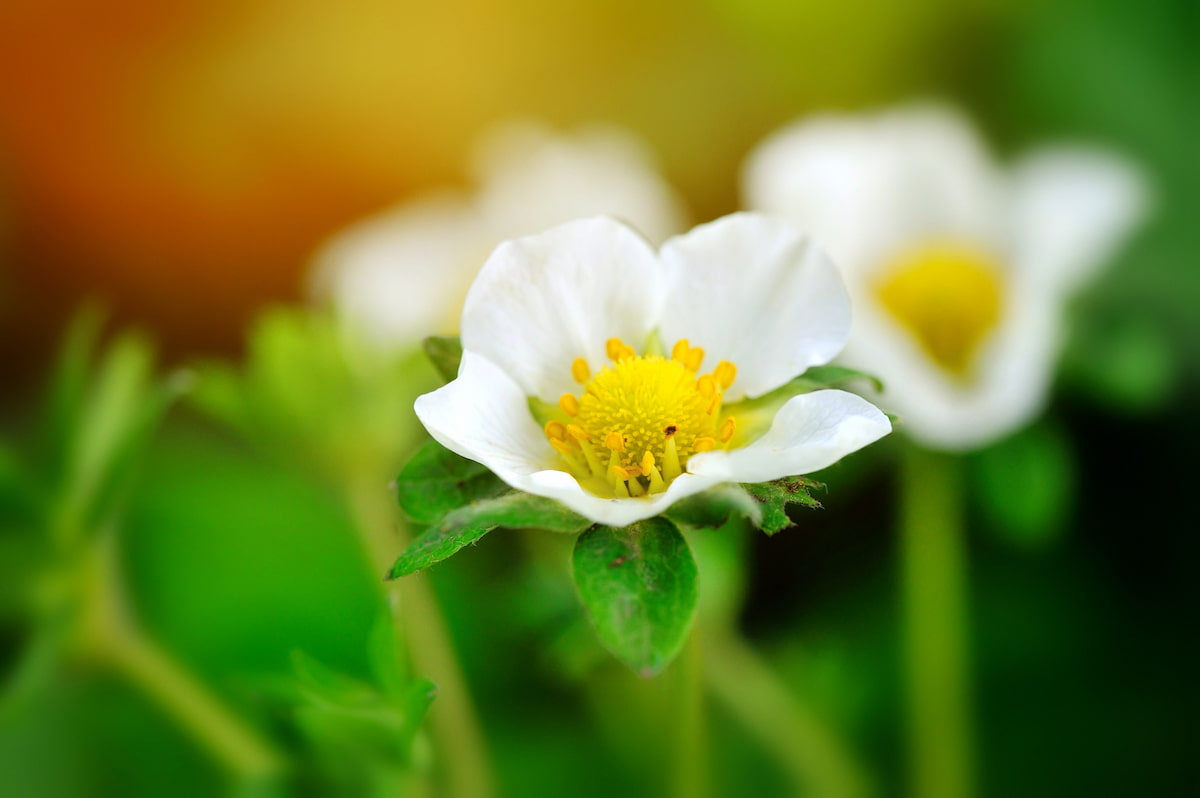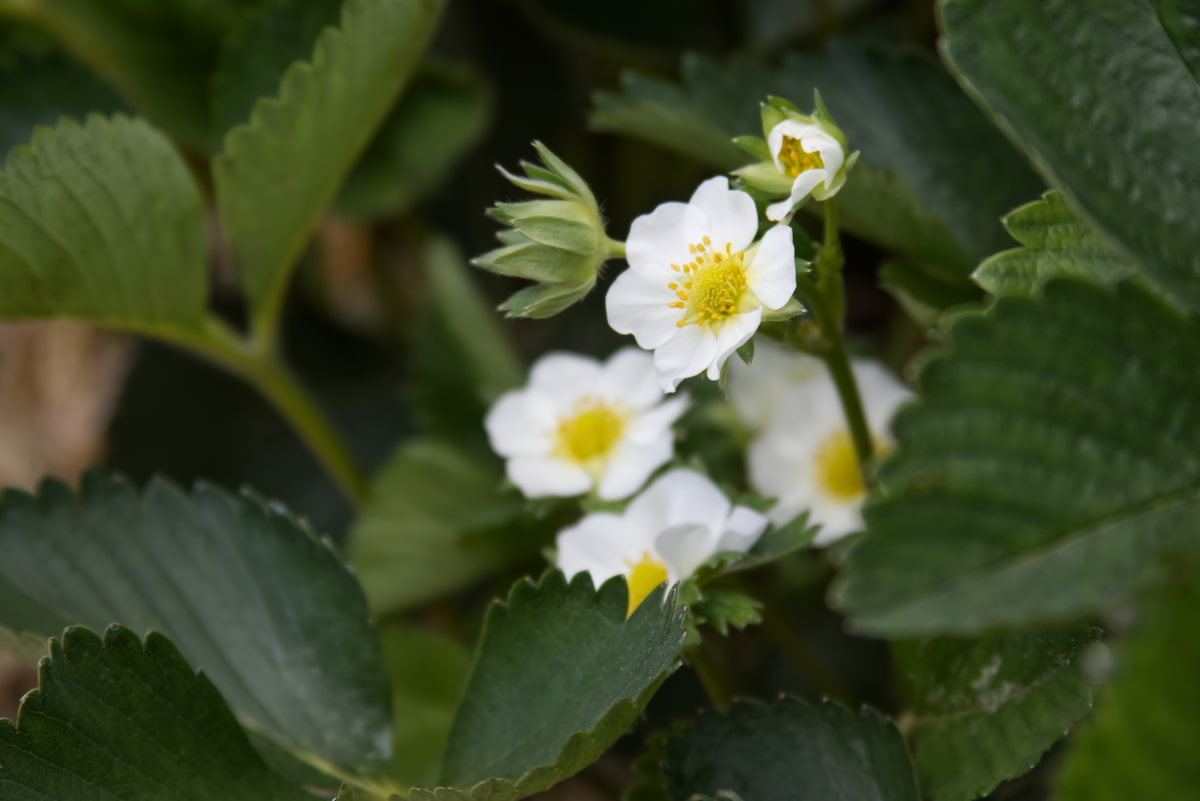Farmers face inconsistent production of female flowers in strawberries, affecting fruit development, crop yield, and profitability. Factors such as genetics, environmental conditions, and cultural practices can affect the production of female flowers. Researchers and farmers have been exploring different techniques to increase the number of female flowers in strawberry plants to address this issue. Improving female flower production is crucial to ensure consumers’ consistent supply of delicious strawberries.

How to Increase Flowers in Strawberries
Introduction to Strawberries Cultivation
Strawberries are one of the most popular and widely grown fruit crops globally, with an estimated 9 million hectares cultivated globally in 2021. The fruit is enjoyed for its sweet taste, high nutritional value, and versatility in culinary applications. However, successfully cultivating strawberries requires careful attention to soil, water, and nutrient management, as well as disease and pest control.
Strawberries are typically grown in rows on raised beds covered with plastic mulch to enhance soil warming, control weeds, and prevent erosion. The plants require moderate to high irrigation and fertilization with nitrogen, phosphorus, and potassium. Successful cultivation also requires the management of pests such as spider mites, aphids, and thrips, as well as diseases like powdery mildew, botrytis fruit rot, and verticillium wilt.
Understand the Anatomy of Strawberries Flowers
Strawberry flowers comprise several parts, including the calyx, corolla, stamens, pistil, and receptacle. Calyx is the flower’s outermost part. And comprises small, green sepals. The corolla is the colorful inner part of the flower, composed of five white petals. The stamens are the male reproductive organs, consisting of a filament and an anther that produces pollen.
The pistil is the female reproductive organ, consisting of a stigma, style, and ovary. The stigma is the top part of the pistil, which receives pollen from the stamens. The long, slender part of the pistil style connects the stigma to the ovary, which contains the ovules that develop into seeds. It will eventually develop into seeds. Finally, the receptacle is the base of the flower, which supports all the other parts and eventually develops into the fleshy, edible part of the fruit.
The Best Variety of Cultivation Strawberries
Strawberry ‘Vibrant,’ Strawberry ‘Honeoye,’ Strawberry’ Cambridge Favorite,’ Strawberry ‘Sweetheart,’ Strawberry ‘Buddy,’ Strawberry ‘Florence,’ Strawberry’ Mara Des Bois,’ Strawberry’ Snow White,’ Strawberry’ Colossus’ Alpine/Woodland Strawberry.
Optimal Growing Conditions for Strawberries
Strawberries are a highly cultivated fruit crop, and various factors, including temperature, light, moisture, and nutrient availability, can influence their growth and yield. Optimal growing conditions for strawberries typically include well-drained, sandy loam soils with a pH range of 5.5 to 6.5. They also require moderate temperatures, with the ideal range between 16°C to 24°C. Strawberries require a consistent moisture supply, with adequate irrigation and drainage to prevent waterlogging.
Strawberries also require sufficient nutrients, especially nitrogen, phosphorus, and potassium. Adequate amounts of calcium, magnesium, and sulfur are also important. Farmers must carefully manage pests and diseases, including spider mites, aphids, powdery mildew, and botrytis fruit rot, to achieve optimal growth. Proper crop rotation and soil management practices can help reduce the incidence of soil-borne diseases.
In case you missed it: How to Increase Female Flowers in Saffron: Explained in 10 Steps for More Yields and Profit

Strawberries Flowering Stage
The flowering stage of strawberries is a critical phase in the growth and development of the plant. During this stage, the plant produces flowers that contain both male and female reproductive organs. The flowers typically appear in early spring, requiring specific environmental conditions for optimal growth and production. Adequate soil moisture, nutrient availability, and moderate temperatures are essential for healthy flower development.
The flowers develop into small, green fruits that gradually increase in size and turn red as they mature. Pollination is critical during this stage, and strawberry plants typically rely on insect pollinators, such as bees, to transfer pollen between the male and female reproductive organs. Proper pest and disease management is also crucial during this stage to prevent damage to the flowers and young fruits, which can reduce crop yield.
Factors that Affect Less Female Flowers in Strawberries
- Climate: temperature, rainfall, and humidity changes can impact flower development and reduce the number of female flowers in strawberries.
- Soil nutrients: a lack of essential nutrients such as phosphorus, potassium, and calcium can negatively affect flower production.
- Plant age: younger plants may produce fewer female flowers than mature plants.
- Genetics: certain strawberry varieties may naturally produce fewer female flowers.
- Pollination: inadequate pollination can result in a lower number of female flowers.
- Pest and disease pressure: infestations and infections can cause damage to the plants and reduce flower production.
- Cultural practices: improper pruning and fertilization techniques can negatively impact flower development.
- Light availability: insufficient or excessive sunlight exposure can limit the number of female flowers produced in strawberries.
10 Simple Tips to Increase Female Flowers in Strawberries
- Provide adequate nutrition: ensure your strawberry plants receive balanced nutrition, especially phosphorus, potassium, and calcium.
- Adjust soil pH: maintain a slightly acidic pH of 6.0 to 6.5.
- Use organic fertilizers: use organic fertilizers like compost, manure, or fish emulsion to provide nutrients.
- Mulch the soil: mulching can help maintain moisture and temperature levels in the soil, which can promote flower production.
- Water regularly: strawberry plants require consistent moisture to produce healthy flowers.
- Provide good drainage: ensure adequate drainage to prevent waterlogged soil, which can negatively impact flower production.
- Manage pests and diseases: prevent or manage pest and disease outbreaks to avoid plant damage that can limit flower production.
- Ensure adequate sunlight: provide enough sunlight for your strawberry plants, ideally at least 6 hours of direct sunlight daily.
- Avoid excessive heat: high temperatures can reduce flower production, so keep your plants cool during hot weather.
- Choose the right variety: select a strawberry variety that produces more female flowers.
In case you missed it: How to Increase Female Flowers in Grapes: Explained in 10 Simple Steps for High Yields and Profit

Conclusion
Increasing flower production in strawberries can lead to higher yields and productivity. By following the ten simple steps outlined above, strawberry growers can ensure their plants receive adequate nutrition, water, and sunlight, as well as proper pruning and pest management.
Additionally, companion planting and hand pollination techniques can further enhance flower production. It’s important to start with high-quality seeds or transplants and maintain proper soil pH and drainage. With these tips and techniques, growers can increase the number of female flowers in their strawberry plants, leading to a more abundant and successful harvest.
- Feed Your Flock for Less: Top 10 Tips to Save on Chicken Feed
- Ultimate Guide to Ossabaw Island Hog: Breeding, Raising, Diet, and Care
- Hatching Answers: The Top 10 Reasons Your Chickens Aren’t Laying Eggs
- Eggs and Economics: Breaking Down the Cost of Raising Backyard Chickens
- Defend Your Greens: Proven Methods to Keep Iguanas Out of Your Garden
- Ultimate Guide to Cinnamon Queen Chicken: A Comprehensive Guide for Beginners
- Ultimate Guide to California Tan Chicken: Breeding, Raising, Diet, Egg-Production and Care
- Ultimate Guide to Marsh Daisy Chicken: Breeding, Raising, Diet, and Care
- 10 Types of Chicken Farming Businesses You Can Start for Profits